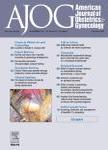版权所有:内蒙古大学图书馆 技术提供:维普资讯• 智图
内蒙古自治区呼和浩特市赛罕区大学西街235号 邮编: 010021

作者机构:Univ Texas Hlth Sci Ctr Houston McGovern Med Sch Dept Obstet Gynecol & Reprod SciDiv Maternal Feta Houston TX 77030 USA Univ Texas Hlth Sci Ctr Houston Ctr Clin Res & Evidence Based Med Houston TX USA
出 版 物:《AMERICAN JOURNAL OF OBSTETRICS AND GYNECOLOGY》 (Am. J. Obstet. Gynecol.)
年 卷 期:2025年第232卷第3期
页 面:315e1-315e8页
核心收录:
学科分类:1002[医学-临床医学] 100211[医学-妇产科学] 10[医学]
基 金:McGovern Medical School University of Texas Health Science Center at Houston
主 题:aspirin Bayesian analysis comparative effectiveness diabetes mellitus gestation hypertension preeclampsia preterm birth
摘 要:BACKGROUND: In the United States, leading medical societies recommend 81 mg of aspirin daily for the prevention of preeclampsia in women at risk, whereas the NICE guidelines in the United Kingdom recommend a dose as high as 150 mg of aspirin. Recent data also suggest that in the obese population, inadequate dosing or aspirin resistance may impact the efficacy of aspirin at the currently recommended doses. OBJECTIVE: We evaluated whether daily administration of 162 mg aspirin would be more effective compared with 81 mg in decreasing the rate of preeclampsia with severe features in high-risk obese pregnant individuals. STUDY DESIGN: We performed a randomized trial between May 2019 and November 2022. Individuals at 12-20 weeks of gestational age with a body mass index = 30 kg/m(2) at the time of enrollment and at least 1 of 3 high-risk factors: history of preeclampsia in a prior pregnancy, at least stage I hypertension documented in the index pregnancy, pregestational diabetes or gestational diabetes diagnosed before 20 weeks of gestational age were randomized to either 162 mg or 81 mg of aspirin daily till delivery, participants were not blinded to treatment allocation. Exclusion criteria were multifetal gestation, known major fetal anomalies, seizure disorder, baseline proteinuria, on aspirin because of other indications, or contraindication to aspirin. The primary outcome was preeclampsia with severe features (preeclampsia or superimposed preeclampsia with severe features;eclampsia;or hemolysis, elevated liver enzymes, low platelet count syndrome). Secondary outcomes included rates of preterm birth because of preeclampsia, small for gestational age, postpartum hemorrhage, abruption, and medication side effects. A sample size of 220 was needed using a preplanned Bayesian analysis of the primary outcome to estimate the posterior probability of benefit or harm with a neutral informative prior. RESULTS: Approximately 220/343 (64.1%) individuals were randomized. The pri